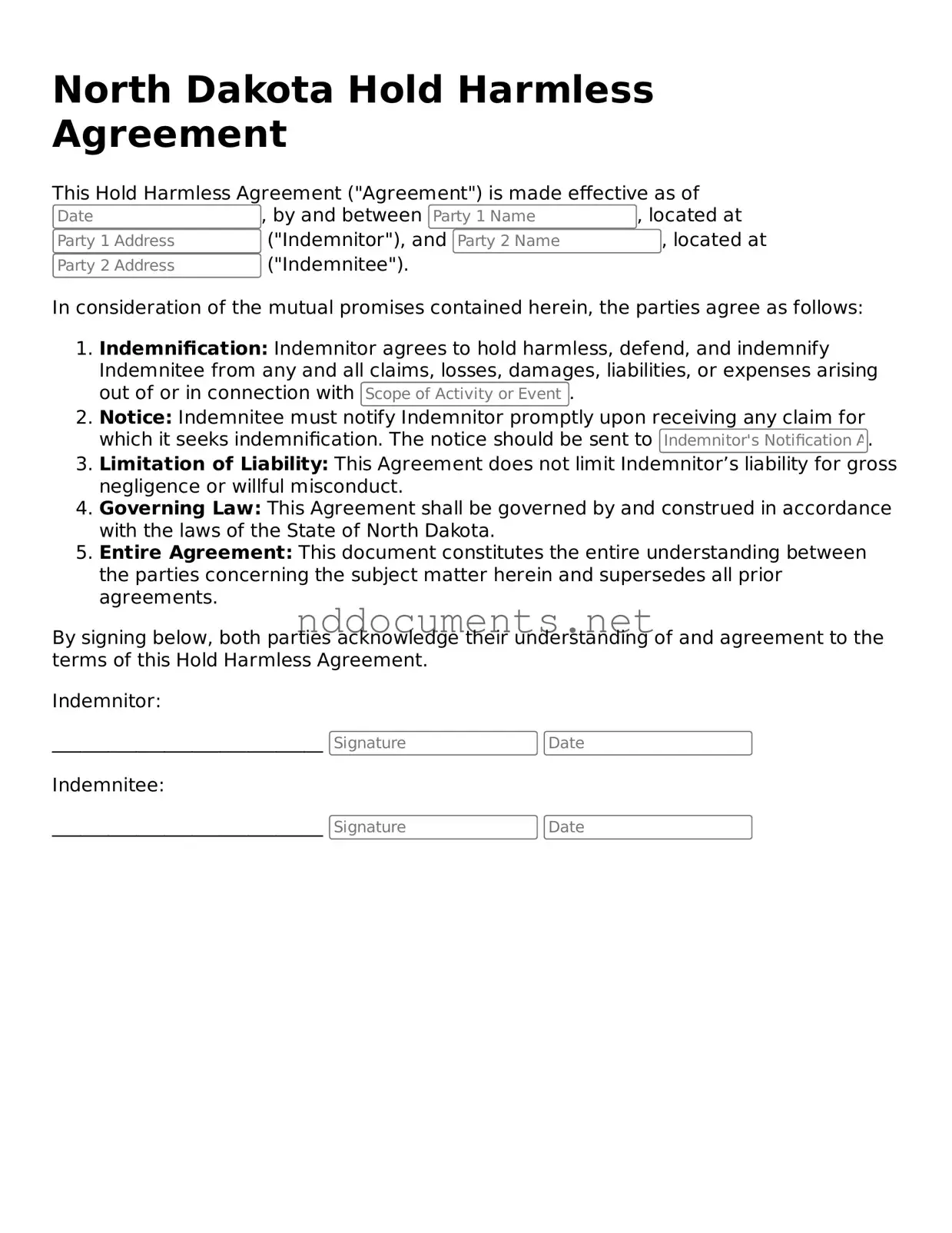Fillable Hold Harmless Agreement Document for North Dakota
The North Dakota Hold Harmless Agreement form is a legal document designed to protect one party from liability for any damages or injuries that may occur during a specific activity or event. By signing this agreement, individuals or organizations agree to assume responsibility for any risks involved, thereby shielding the other party from potential legal claims. Understanding the nuances of this form is essential for anyone looking to navigate responsibilities and liabilities in various situations.
Make Your Document Online
